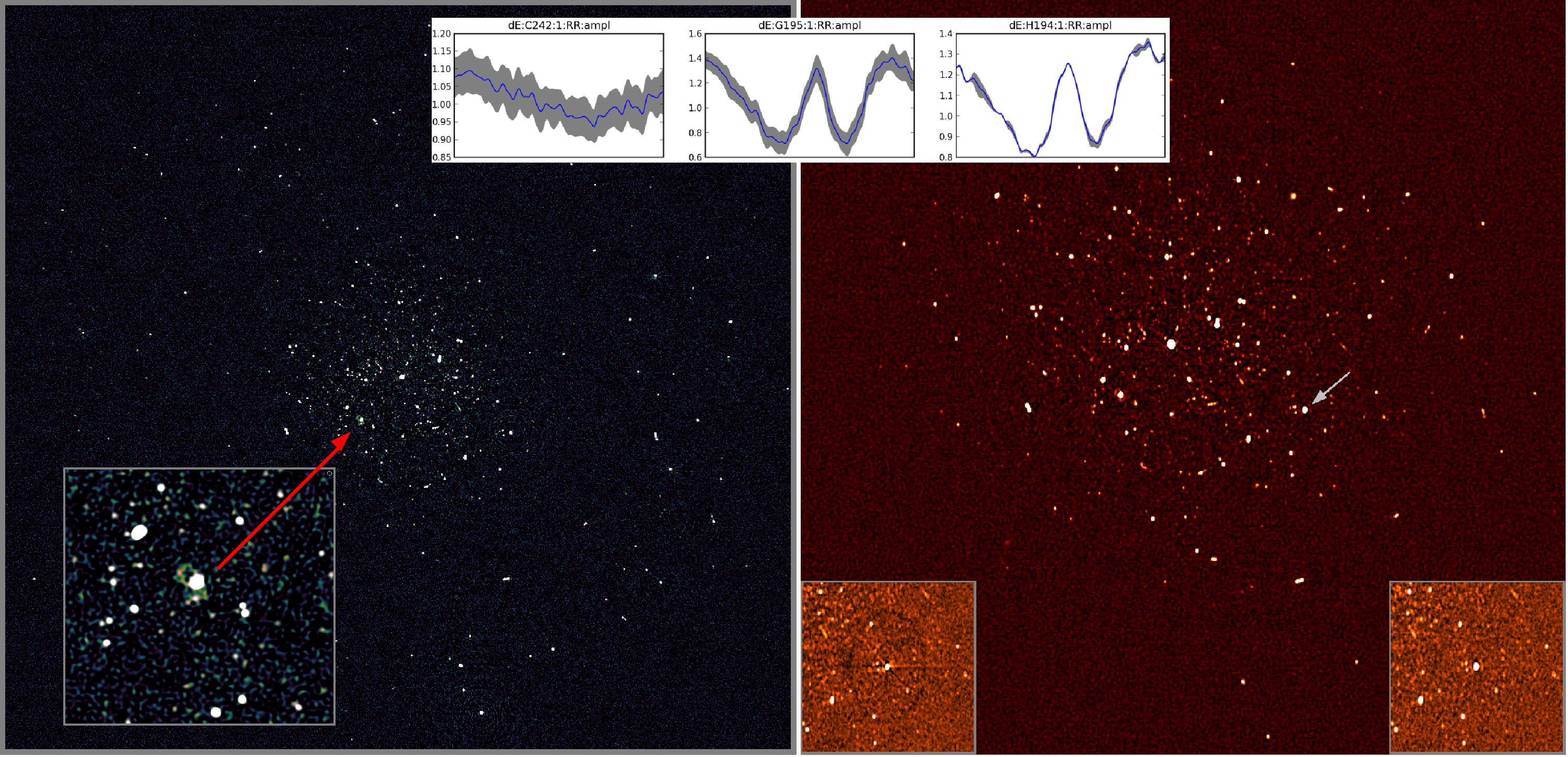Daily Image
07-02-2014Of Beams and Blue Ribands
| Submitter: | Oleg Smirnov & Rick Perley |
| Description: | The left-hand image shows a new 21cm map of the field around 3C147 produced from Jansky Very Large Array C- and D-config data. This sets a new world record for dynamic range (taken as the ratio between the brightest source in the map -- 3C147 itself -- and the thermal noise, since the map is completely artefact-free) of 3.2 million, which is twice the previous best set by Ger de Bruyn and Oleg Smirnov on the same field (WSRT, right image, see also AJDI for 15-02-2010 and 23-02-2010). The bottom-left inset shows some delicate extended structure that is was only marginally resolved in the WSRT map, but shows very clearly in the JVLA one. The images are deep enough to demonstrate fundamental design differences between the telescopes. The JVLA was optimized for forward gain, which produces a relatively high first primary beam sidelobe -- and this is clearly visible in the source distribution. The WSRT, on the other hand, has a very low first sidelobe, with only the brightest sources coming through. This, along with the absence of sky rotation, is probably a major reason why it has held the Blue Riband of dynamic range for so long. Both images were produced using MeqTrees, with differential gain solutions obtained with Stefcal applied to the brighter off-axis sources. The top inset shows the amplitudes of these solutions (in the JVLA case) towards three different sources. Most of the amplitude variation is entirely consistent with what we would expect from rotation of the JVLA's primary beam pattern over the sky. The next challenge is to explicitly incorporate a beam model into the calibration loop, so that we can reproduce the same map with relatively "flat" differential gains. Work on this is in progress, so watch this space. High dynamic range has been associated with terms like "Blue Riband", "macho imaging" and "bragging rights", and there is certainly some truth in that. However, the real reason we produce maps like these is to show that we actually can understand a telescope well enough to drive it to the limits of its performance -- if not routinely yet, then at least in showcase observations. What is certain is that without these techniques, future telescopes are dead in the water, so the Blue Riband has an important role to play. Challengers beware though: the JVLA map above uses less than a quarter of the available bandwidth! |
| Copyright: | Rhodes/SKA SA/NRAO/ASTRON |
| Tweet |  |
